
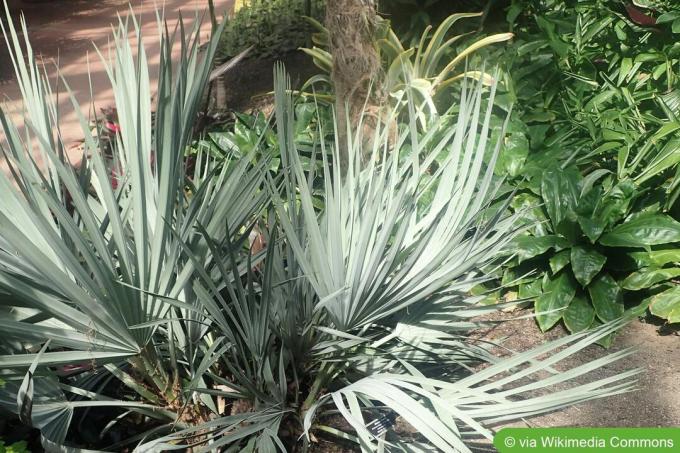
Table of contents
- substrate & soil
- Fertilize
- Cut
- multiply
- hibernate
- Location
- temperature
- repot
- Pour
- diseases and pests
- Frequently Asked Questions
- Worth knowing about the Mazari palm shortly
- Location
- plant substrate
- Care
- pruning
- Fertilize
- hibernate
- Buy
She loves the sun and likes to sway decoratively in the wind. The slow-growing Mazari palm (Nannorrhops ritchiana) is easy to care for and a real eye-catcher on the terrace, in the conservatory, but also as a houseplant and outdoors. The palm tree, which comes from the Arecaceae family, is very common in Iran and is therefore also ideal for our climate zone (zones 7 to 10).
From April to October, the Mazari palm likes to spend its time outdoors. The sunnier their location, the blue-grey their beautiful, fanned palm fronds turn. The hardy Nannorrhops ritchiana also thrives outdoors or indoors and only needs regular watering and occasional light fertilization. In particularly good conditions, its black berries and sometimes the white or yellow majestic flowers show up. The Mazari palm is one of the world's most cold-tolerant palm species.
substrate & soil
As a typical representative of the palm genus, the Mazari plant prefers a mixture of organic substances. A loose substrate made of palm soil, mixed with lava stones, gravel or expanded clay and some coarse sand is good for the palm and also prevents waterlogging in the soil. A commercially available palm soil can be used. Pure peat or pure humus should be avoided, as this substrate does not provide the plant with sufficient support or nutrients. In addition, the natural decomposition process of the peat can burn the roots of the palm tree. When planting out in the garden, add some gravel and sand to the potting soil if possible to keep the soil loose and permeable even after long periods of rain.
Tip:
In a well-drained substrate, the Mazari plant likes to be outside most of the year and will tolerate any downpour.
Fertilize
The Nannorrhops ritchiana is fertilized every 14 days with a complete fertilizer that is added to the irrigation water. The use of a long-term fertilizer (eg. B. in the form of fertilizer sticks or granules) makes sense. A commercially available palm fertilizer or another nitrogen-rich fertilizer for green plants is used. Stop fertilizing a few weeks before the onset of winter to allow the plant to prepare for dormancy. In winter there is no fertilization and only after the start of the growth phase (from April) does fertilization start again. If the plant was repotted in pre-fertilized soil, fertilizing should be avoided for the time being.
Cut
The Mazari palm is not pruned. Your growing point sits at the top of the plant and only brown or diseased leaves are removed. If the leaves are withered, it is worth waiting for them to wither completely, because during this time the plant can still draw nutrients from the leaf.
multiply
Nannorrhops ritchiana is grown from seed. These are inserted 1 to 2 cm deep into the ground. A translucent film is placed over the pot with ventilation holes for sufficient air circulation. Placed in a bright and warm location, the seeds will germinate in just a few weeks.
hibernate
In the winter quarters, the substrate dries much more slowly, not only because of the cooler temperature and the lower light keep the moisture in the soil longer, the plant also has its growth and thus its nutrient requirements to a large extent set. But even in winter, the Mazari plant must not dry out. It has to be moistened well again and again, whereby the intervals between dry and wet periods are increased. The short-term minimum temperature of -10 °C must not be fallen below. For potted and tub plants, the winter temperature is permanently around 5 °C (+/-8 K).
The palm is protected from moisture and cold. Planted specimens are protected with a canopy made of translucent foil, which provides sufficient ventilation on the sides. The fronds can be tied up and wrapped with fleece to protect the palm from too much moisture and cold air. However, the plant should be checked regularly for rot and mold growth; removing the fleece also ensures the necessary exchange of air. Plastic foils are never used to wrap the fronds, because the natural formation of condensation and the lack of air circulation cause rot.
Location
The Mazari palm likes sunny to full sun, but after the winter break it should only be acclimated to the sunlight slowly to avoid leaf damage.
Tip:
Full sun exposure affects the coloring of the leaves. The attractive grey-blue suits the Mazari palm particularly well in black, glazed pots.
temperature
In summer, the Mazari palm enjoys the warmth, in winter it can also hibernate at around 5 °C during the dark months.
repot
If the pot is well rooted or the foothills of the palm tree are already pressing against the edge of the pot, it is time to repot. The next larger pot is chosen. Like all palms, the Mazari palm prefers a deep planter that is not too wide. Their roots dig deep into the ground to find enough nutrients even during long periods of drought. The deeper the pot, the greater the root system and thus the stability of the palm tree.
Pour
As soon as the substrate has dried well, the Mazari palm is poured abundantly. The mostly deep pots must be completely penetrated with water so that the deep-seated roots can still get enough nutrients. The watering rhythm depends on the outside temperatures and the growth period of the plant. If it is in full sunlight, a lot of liquid evaporates and the plant also requires a higher water supply in order to follow the growth impulse.
diseases and pests
Spider mites, scale insects and mealybugs can infest the Mazari palm. In the early stages of infestation, removing the affected leaves may help. Rinsing or washing off the plant is also recommended occasionally, but this can contribute to the faster spread of the parasites. It should also be noted that popular home remedies such as alcohol or soft soap damage the plant. Commercially available pesticides act quickly and effectively in the event of an infestation. Yellow or brown leaves also show up with too much or too little care. If you water too much, the leaves of the palm tree will initially turn yellow.
If the plant has dried out, the leaves will turn brown and wilt. Too much or too little fertilizer can also damage the Mazari palm and is usually reflected in yellow leaves or brown leaf tips. If in doubt, repotting and replacing the substrate is recommended. To do this, the plant is removed from the pot and the over-fertilized or over-poured soil carefully removed from the roots.
Frequently Asked Questions
Lime-free water prevents unsightly stains on the leaves of the palm tree.
Yes. However, it is better to leave the irrigation water for a few days before using it.
Worth knowing about the Mazari palm shortly
Mazari palms are one of the few palm species that can branch. The plant also forms runners. The best thing about the plant for our latitudes is its frost hardiness. It is frost hardy down to -25 ºC. Attention: Each leaf crown of the Mazari palm only flowers once. After that, this crown dies off. The other crowns in the pot continue to grow normally.
Location
- The Mazari palm likes a location that is as bright as possible.
- It tolerates direct sunlight all day long.
- She likes warmth, the temperatures in summer should be as high as possible.
plant substrate
- The plant substrate should be permeable.
- The palm likes a loamy and sandy soil to which gravel, expanded clay or lava granules can be added.
- Pure peat or humus soil is not suitable.
- Repot in spring. You take a slightly larger vessel.
- Palm trees love tall tubs. They have taproots that need space underneath.
Care
- The water requirement of the Mazari palm is not very high. The substrate should always be kept slightly moist.
- In summer, when it is very hot, the Nannorrhops ritchiana should be watered well. The more water she gets, the better she grows.
- The root ball must be moist to the bottom. The top layer of substrate should dry between waterings.
- The palm tree does not like standing water, i.e. wet feet.
pruning
- Brown leaves of the palm tree are left to dry completely before cutting them off.
- Carefully separate the petiole at the base. A small piece of the stalk, about 3 cm, remains on the trunk.
Fertilize
- Fertilize at the beginning of the growth phase in spring.
- Commercial liquid fertilizer is used every two weeks.
- But you can also incorporate slow-release fertilizers into the top layer of the substrate.
hibernate
- The Nannorrhops ritchiana tolerates high sub-zero temperatures. It can also cope well with sub-zero temperatures in pots, but the root ball must not freeze through.
- The roots are not as frost resistant as the parts of the plant above ground. It is therefore beneficial if the container plant is overwintered at 5 to 15 ºC.
- If it stays outside, the tub must be packed well. You should also put it on a styrofoam block.
- Planted out Mazari Palms are considered frost hardy down to -9ºC. Higher degrees of frost are also tolerated for a short time. The palm should be well protected from frost.
Buy
- The Mazari palm grows very slowly and is therefore quite expensive. Small seedlings or young plants cost just under 10 euros.
- They are not available everywhere, usually only from good breeders. For larger specimens you have to calculate significantly higher prices.
 garden editorial
garden editorial I write about everything that interests me in my garden.
Learn more about palm trees
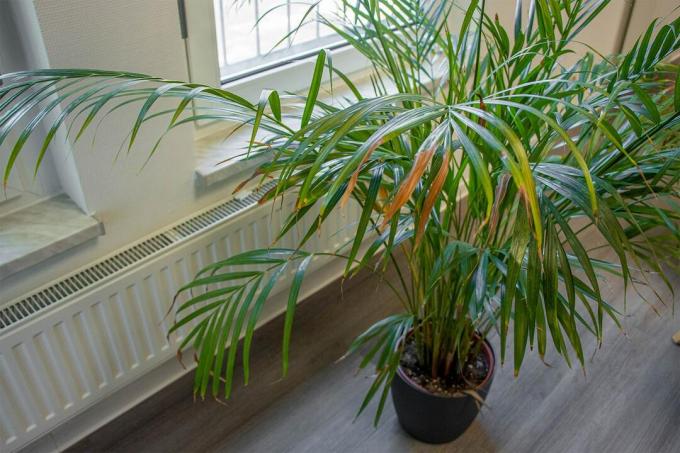
Palm leaves hanging: save yucca & co
Palm trees give the home a southern flair. However, if Yucca & Co. let their leaves droop, their sight is rather desolate. The causes of hanging palm fronds vary. A rescue attempt is always worthwhile.
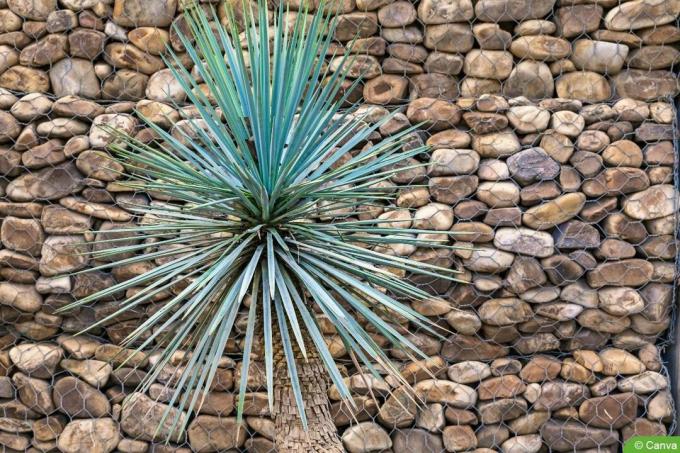
Blue palm lily, Yucca rostrata: 12 tips for care & Co.
The blue yucca (Yucca rostrata) is one of the most fascinating Yucca species. Since it hardly requires any care, it is also suitable for the office. Planted in the garden, it is considered hardy when it is dry.
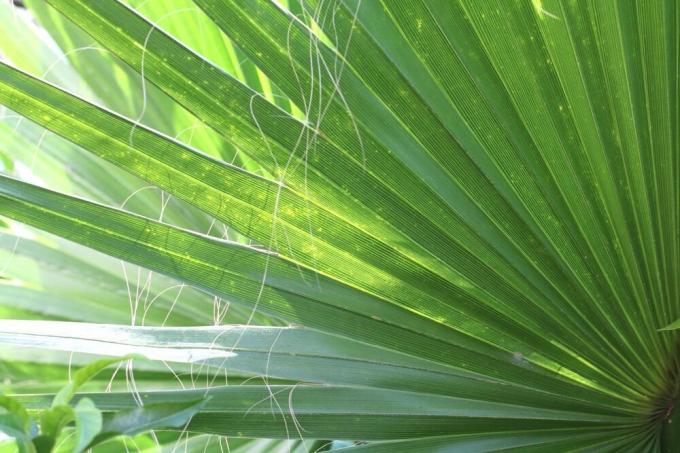
Washington Palm: Care From A-Z | Overwinter Washingtonia robusta
The Washington palm is a decorative plant that can grow to an impressive size. Due to the lack of winter hardiness, the plant is usually kept indoors in this country. When it comes to care, the palm makes certain demands so that healthy development can occur.

Areca palm, Dypsis lutescens: basics of care
The Areca Palm is a beautiful plant for indoor greenery. When it comes to care and location, the palm has certain requirements, if these are met, the plant will thrive. In order for the plant to grow constantly green, it needs the right lighting conditions.
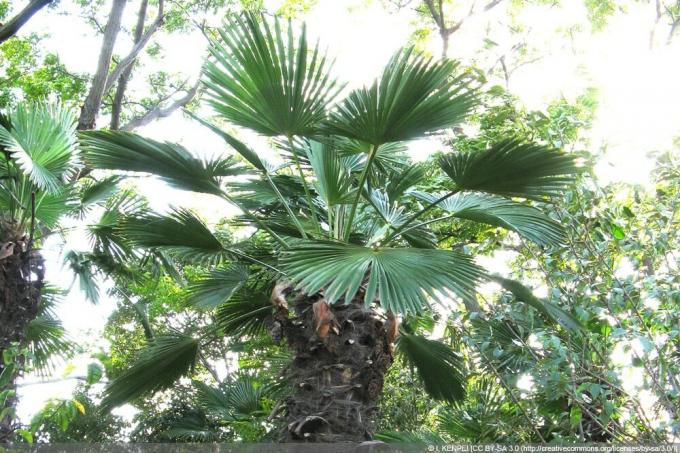
Wagner's hemp palm, Trachycarpus wagnerianus: Care from A-Z
If you want exotic flair in your garden or on your terrace, you can't avoid Wagner's hemp palm. No wonder: the extremely decorative umbrella palm not only looks impressive, but is also very robust. More about this is here.

Candle palm lily, Yucca Gloriosa – Care from A-Z | Is she hardy?
A yucca is better known to most as an exotic houseplant, the candle palm lily (bot. Yucca gloriosa) is also ideal as an outdoor plant, bringing a touch of tropical flair to your garden.
